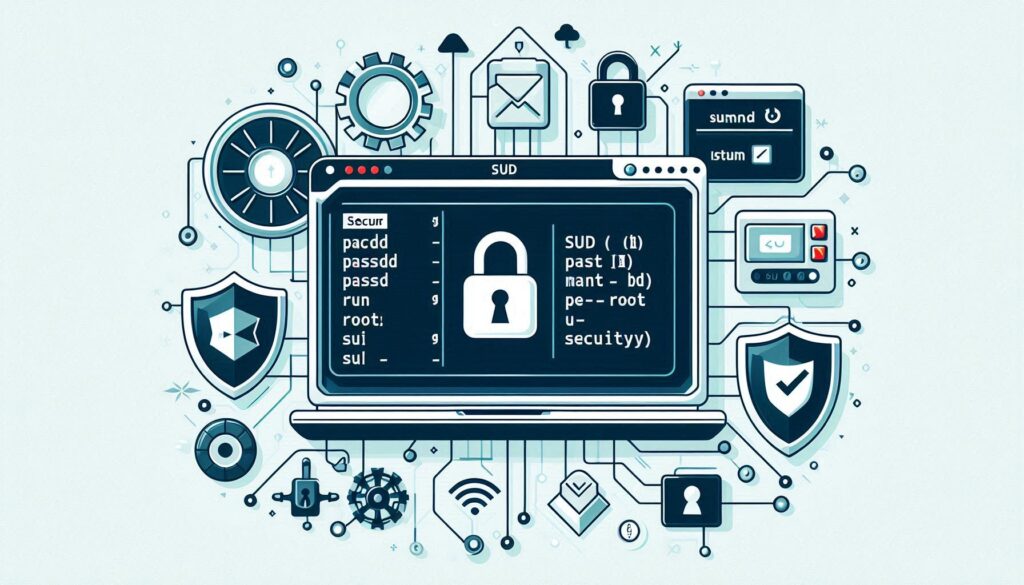Estimated reading time: 4 minutes
I’ve worked with both GUIs and command-line interfaces, and I can confidently say that command-line commands are my go-to. They’re efficient, precise, and reliable—especially if you’re working on remote servers where a GUI isn’t even an option. In this guide, I’ll cover 10 important Linux user management commands that every admin should know, from adding users to locking accounts.
Why Linux User Management Commands Are Essential
Knowing your way around user management is key, whether you’re a sysadmin at a large company or managing a personal server. Proper user management helps ensure that each user has the right level of access and that unused accounts are dealt with securely. I’ve selected these Linux user management commands based on several years of experience—they cover the basics and a little extra.
1. Adding Users with adduser
Creating a new user on Linux is straightforward with the adduser command. Unlike useradd, this command sets up the home directory and prompts you for a password without extra options.
sudo adduser USERNAME Replace USERNAME with the name you want for the user. You’ll be prompted to enter additional information, like the user’s full name, and to set a password.
2. Modifying Users with usermod
If you need to update a user’s access, like adding them to a group or changing their home directory, usermod has you covered. For example, you can add a user to a new group:
sudo usermod -aG GROUP USER In this example, GROUP is the group name, and USER is the username. Need to lock an account temporarily? Just use:
sudo usermod -L USER And to unlock, it’s as simple as switching -L to -U.
3. Changing Passwords with passwd
Passwords need changing, and sometimes users need a prompt. With the passwd command, I can quickly update or expire a user’s password, prompting them to create a new one.
sudo passwd USER To expire a user’s password and force a reset, use:
sudo passwd -e USERThis command is handy for enforcing regular password changes across your server environment.
4. Deleting Users with userdel
You don’t want that account left open when a user no longer needs access. The userdel command deletes the account and can also remove their home directory.
sudo userdel -r USER The -r option ensures the user’s home directory is deleted, keeping your system tidy.
5. Viewing User Details with lslogins
Want to check the last login time, IP address, or groups for a specific user? lslogins is a quick way to gather all this info.
lslogins USER With this command, you can keep tabs on user activity, which can be useful for monitoring and security.
6. Checking Group Membership with groups
Knowing a user’s group memberships helps understand their permissions. The groups command lists all groups associated with a user.
groups USER With this, you can easily verify and manage group-based access on your system.
7. Identifying User Details with id
The id command is a fast way to get all identification details for an user, including UID, GID, and group memberships. It’s a go-to for troubleshooting permissions.
id USER Running this gives you a snapshot of the user’s identity on the system.
8. Switching Accounts with su
Sometimes, you need to switch from your account to another without logging out. The su command does just that, allowing you to access another user’s environment directly.
su - USER This command is especially handy when testing permissions or running commands as a different user.
9. Checking Active Users with who
Want to know who’s currently logged in? The who command provides this information, along with login times and terminals.
who Monitoring active sessions becomes easier with who, as it shows you exactly who’s online and active.
10. Viewing Login History with last
Lastly, for a deeper look at user activity, last shows a history of logins, complete with login times and IP addresses.
last USER This is great for tracking user behavior and ensuring there’s no unauthorized access to your system.
Conclusion
Using these Linux user management commands, you can easily manage user access, ensuring the right people have access while keeping your systems secure. Linux is a powerful platform, and with these commands, you’ll have the means to manage users easily!





Good write-up, I¦m normal visitor of one¦s site, maintain up the nice operate, and It is going to be a regular visitor for a lengthy time.